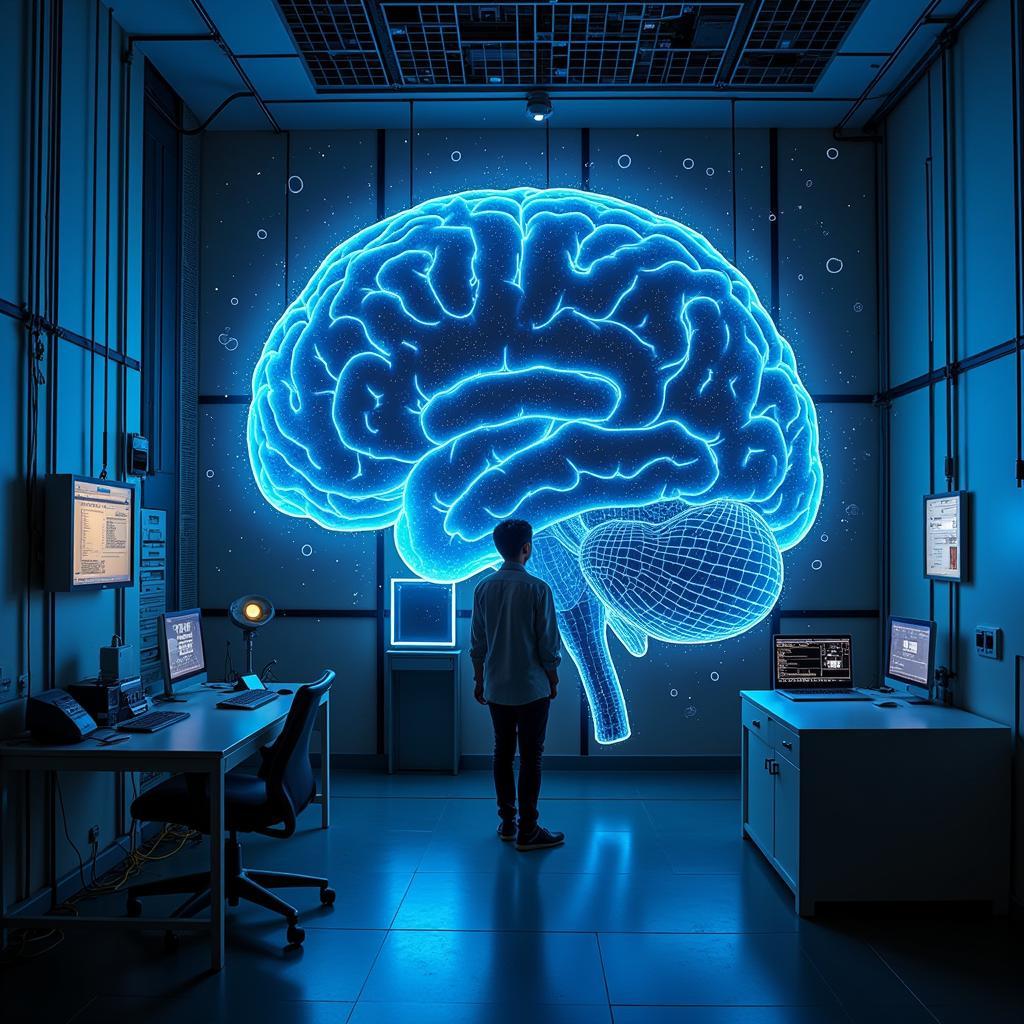Japanese Researchers Dream Playback has become a topic of intense fascination and speculation in recent years. But what exactly is it, and is there any scientific evidence to support its existence? This deep dive will explore the concept of dream playback, the research conducted by Japanese scientists, and the potential implications of this groundbreaking field of study.
Delving into the Realm of Dream Playback
 Japanese Researchers in Dream Playback Lab
Japanese Researchers in Dream Playback Lab
Imagine a world where the elusive landscapes of your dreams could be captured, replayed, and even shared with others. This is the tantalizing promise of dream playback technology. While still in its nascent stages, the concept revolves around the idea of recording and reconstructing brain activity during sleep to recreate dream experiences.
Pioneering Research in Japan
Japan stands at the forefront of this research, with teams of dedicated scientists making significant strides in understanding the complexities of the dreaming brain. Utilizing advanced neuroimaging techniques like fMRI (functional magnetic resonance imaging), researchers are beginning to identify patterns of brain activity associated with specific dream content, such as objects, emotions, and even narratives.
How Does Japanese Researchers Dream Playback Work?
The process of dream playback involves several key steps:
- Brain Activity Recording: Participants sleep in controlled laboratory settings while their brain activity is meticulously monitored and recorded using EEG (electroencephalography) or fMRI.
- Data Analysis and Pattern Recognition: Sophisticated algorithms analyze the vast amount of brain activity data collected, searching for recurring patterns and correlations between specific brainwave frequencies and reported dream content.
- Dream Reconstruction: Based on the identified patterns, researchers attempt to reconstruct the visual and auditory aspects of the dream experience. This often involves using pre-trained artificial intelligence models that have learned to associate specific brain activity patterns with corresponding images or sounds.
The Potential of Dream Playback: Beyond Entertainment
 Therapeutic Applications of Dream Playback
Therapeutic Applications of Dream Playback
While the idea of watching our dreams like movies seems like the stuff of science fiction, the potential applications of Japanese researchers dream playback extend far beyond mere entertainment. This technology holds immense promise for various fields, including:
- Psychology and Psychotherapy: Dream playback could revolutionize mental health treatment by providing therapists with unprecedented insights into their patients’ subconscious minds, aiding in the diagnosis and treatment of conditions like PTSD, anxiety, and depression.
- Creativity and Innovation: Accessing and manipulating our dream content could unlock hidden creative potential and inspire breakthroughs in art, music, literature, and problem-solving across various industries.
- Education and Learning: Imagine a future where learning takes place within our dreams, enhancing memory consolidation and accelerating the acquisition of new skills and knowledge.
- Communication and Understanding: Sharing our dreams through playback could foster deeper empathy and understanding between individuals and cultures, bridging communication gaps and promoting tolerance.
Ethical Considerations and Future Directions
 Ethical Concerns of Dream Playback Technology
Ethical Concerns of Dream Playback Technology
As with any groundbreaking technology, dream playback raises important ethical considerations that must be carefully addressed. Privacy concerns surrounding access to our innermost thoughts and emotions are paramount. Additionally, the potential for misuse, such as dream manipulation or even dream hacking, needs to be mitigated through robust ethical guidelines and regulations.
The road ahead for Japanese researchers dream playback is filled with both excitement and challenges. As technology continues to advance and our understanding of the brain deepens, the possibility of unlocking the mysteries of our dreams and harnessing their power for good is closer than ever before.
Conclusion
Japanese researchers are pushing the boundaries of neuroscience with their groundbreaking work in dream playback. While still in its early stages, this research offers a tantalizing glimpse into the future of dream exploration and its vast potential applications. As we venture further into the uncharted territories of the dreaming mind, it is crucial to proceed with both scientific rigor and ethical responsibility, ensuring that this powerful technology is used to improve our lives and understanding of ourselves.
FAQs about Japanese Researchers Dream Playback
1. Is dream playback currently available to the public?
No, dream playback technology is still in the experimental research phase and not yet available commercially.
2. How accurate are the dream reconstructions?
Current dream reconstruction methods are limited in their accuracy and primarily focus on basic visual and auditory elements. However, researchers are continuously improving the technology to capture more detailed and subjective aspects of dreams.
3. Are there any risks associated with dream playback research?
Participating in dream playback research is generally considered safe, with minimal risks involved. However, as with any scientific study, potential risks and discomforts should be thoroughly discussed with researchers beforehand.
4. What are the ethical implications of dream playback?
Dream playback raises important ethical considerations regarding privacy, consent, and the potential for misuse. Establishing clear ethical guidelines and regulations is crucial to ensure the responsible development and application of this technology.
5. What is the future of dream playback?
The future of dream playback holds immense potential for revolutionizing various fields, including mental health treatment, creative exploration, and education. As research progresses, we can expect to see increasingly sophisticated and impactful applications of this technology.
Need help with dream interpretation or interested in learning more about paranormal phenomena? Contact us at:
Phone: 0904826292
Email: [email protected]
Address: No. 31, Alley 142/7, P. Phú Viên, Bồ Đề, Long Biên, Hà Nội, Việt Nam
Our dedicated team of Paranormal Research experts is available 24/7 to assist you with all your inquiries.